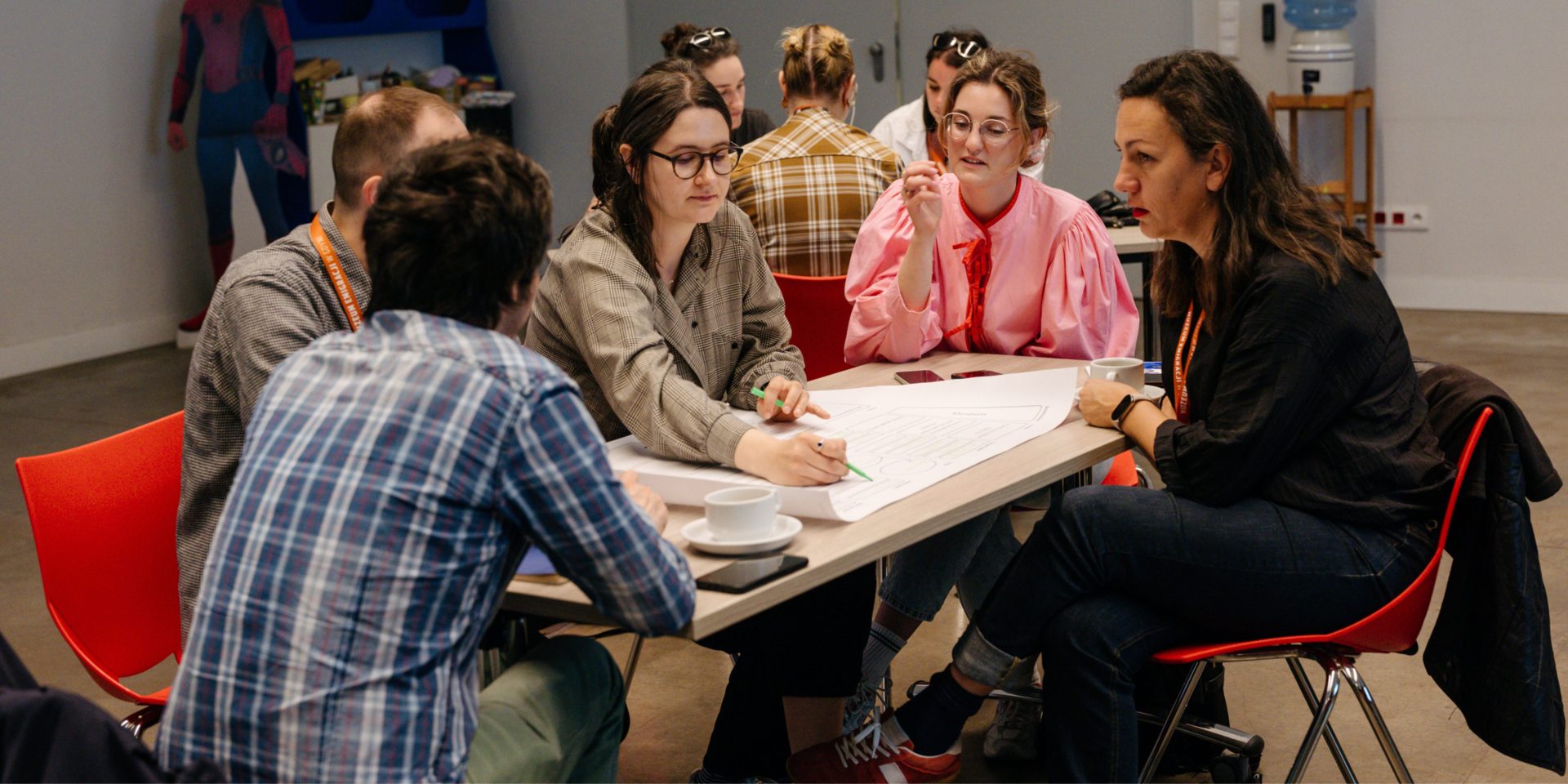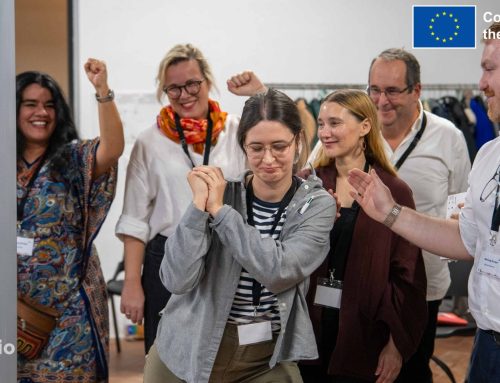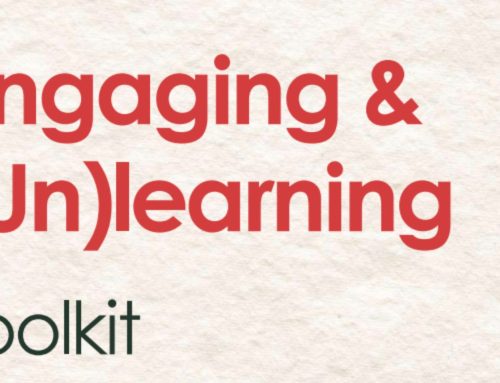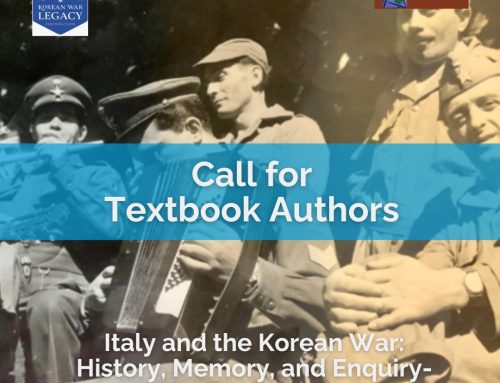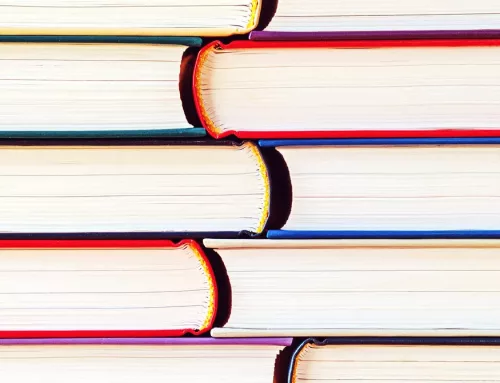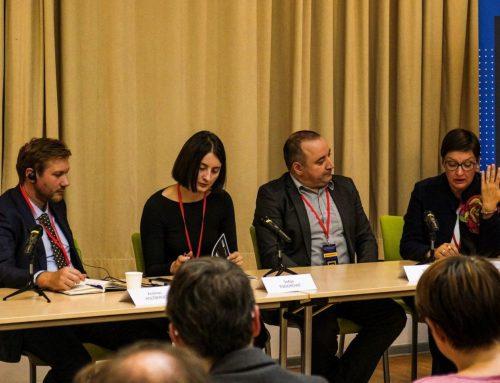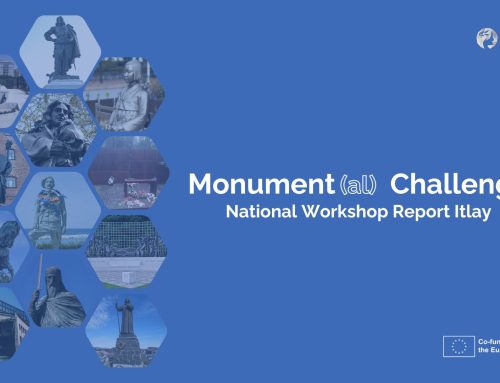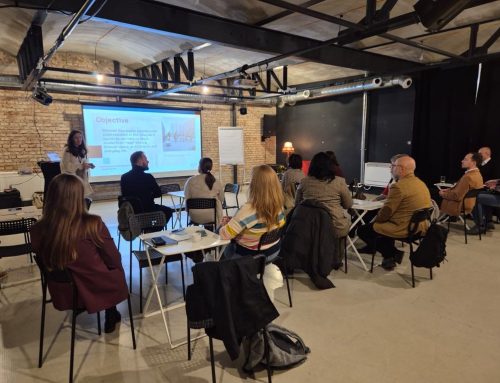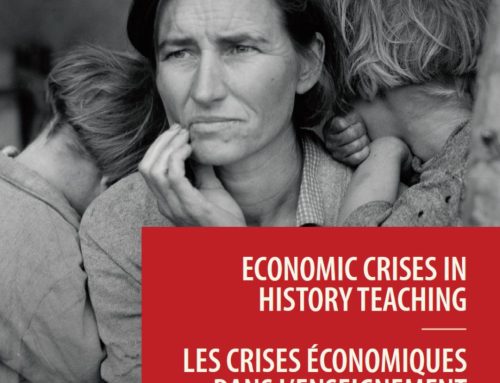Between the 28th and the 30th of May 2025 the team of Moving Europe met at Polska 1, Poland’s number one address (for museal education on migration). This was because the Muzeum Emigracji in Gdynia (itself a part of the team) was hosting the congress “Resistant and Resilient: How museums navigate through the times of crisis” and had kindly invited all partners to both participate and present the newly started project.
Looking back on Gdynia, it is quite hard to imagine that we just spent three days there. Not just because one met so many new people or longtime colleagues, but also because the environment created there was so impactful, that it has not ceased to influence one’s navigation of current societal crisis that we all experience and hear about daily.
We all know about the crisis of democracy and civil society. At this point, I simply refuse to give examples of it. However, the notion that one just simply may ‘see’ this crisis is an immense simplification. Everyone attending the congress could ‘see’ the crisis. Everyone attending sought to be resistant in the face of it. Still, what this crisis meant for those attending and what it entailed, that varied as widely as the many different forms of resilience exhibited in the presentations and discussions of this international congress.
In a sense, this is a very familiar problem for educators and curators: When visiting the Exhibition of the Emigration Museum, who knows how the members of the Sikora family might have felt, when they saw their ocean liner for the first time? How could we ever know what it meant to Valentin Ostrowski, when he pulled his first pint in his newly opened New York pub? Similarly, how differently did ice cream taste to the Kilinska family, after they sold their first cone in their just established ice cream parlour? One must still wonder whether a prewritten letter from America really said what a recently migrated and illiterate husband wanted to say to his wife back in Poland.
In the same sense, one must still wonder about what Angel Island meant for those who were detained there and what poetry the detainees carved into its walls. Just as one must wonder about the many meanings that this island and its stories might have for the Californians of today.
In times of crisis, museums help us to navigate the present by opening up the enduring question of another’s being-in-the-world. They confront us with the existence of another’s reality and its often drastically different complexions. They therefore create unity by showing and reminding us that the other has (or had) a reality, an experience and a life.
I think this is also what Taras Gembik referred to, when he said:
“The most radical form of resistance is care.”
Resistance contains the openness towards and the acceptance of the other. Gembik, from the Museum of Modern Art in Warsaw, quoted A., who remarked on her first visit to an art gallery:
“I tried to understand, so now I am here.”
While understanding an artist’s expression of their experience might be an endeavour as ambitious and unending as understanding Ostrowski’s experience of migration or a person’s love of ice cream, their experience still constitutes an enduring problem of understanding for those confronted with its traces. And, although this problem of understanding another’s experience may never be fully resolved, its traces still manage to bring us together.
In one way or another Krzysztof Krakowski, Eleni Kyrkopoulou, Anna Ochmańska, Thiago Haruo Santos, Justine di Mayo, Magdalena Wróblewska all talked about the experience of the other and one’s relation to them.
It is then no wonder that societies threatened with their violent annihilation have their museums targeted. This was made utterly clear by Amer Shomali from The Palestinian Museum, Milena Chorna from the Ukrainian Museum Association, Olha Mukha from the Memorial Museum “Territory of Terror” and Małgorzata Ławrowska – von Thadden from the OBMIN Foundation. As Olha Mukha remarked, the survival of museums in such a situation “is itself becoming a mode of resistance”. Looking back at Gdynia, I am sure that one thinks of the accounts of three black dresses and bombed out exhibitions. And while one hearing these accounts may never comprehend the realities behind them, the questions they impose endure and become a source of greater unity and solidarity.
When thinking of Moving Europe after the Resistant and Resilient Congress, we can contend ourselves to have experienced together what we ought to archive in our project’s educational youth programmes: The encounter with the other and the enduring problem of understanding them; A moment of σχολή (skholḗ) (how Piotr Zamojski described it) and a moment of triumph in an ongoing crisis.

